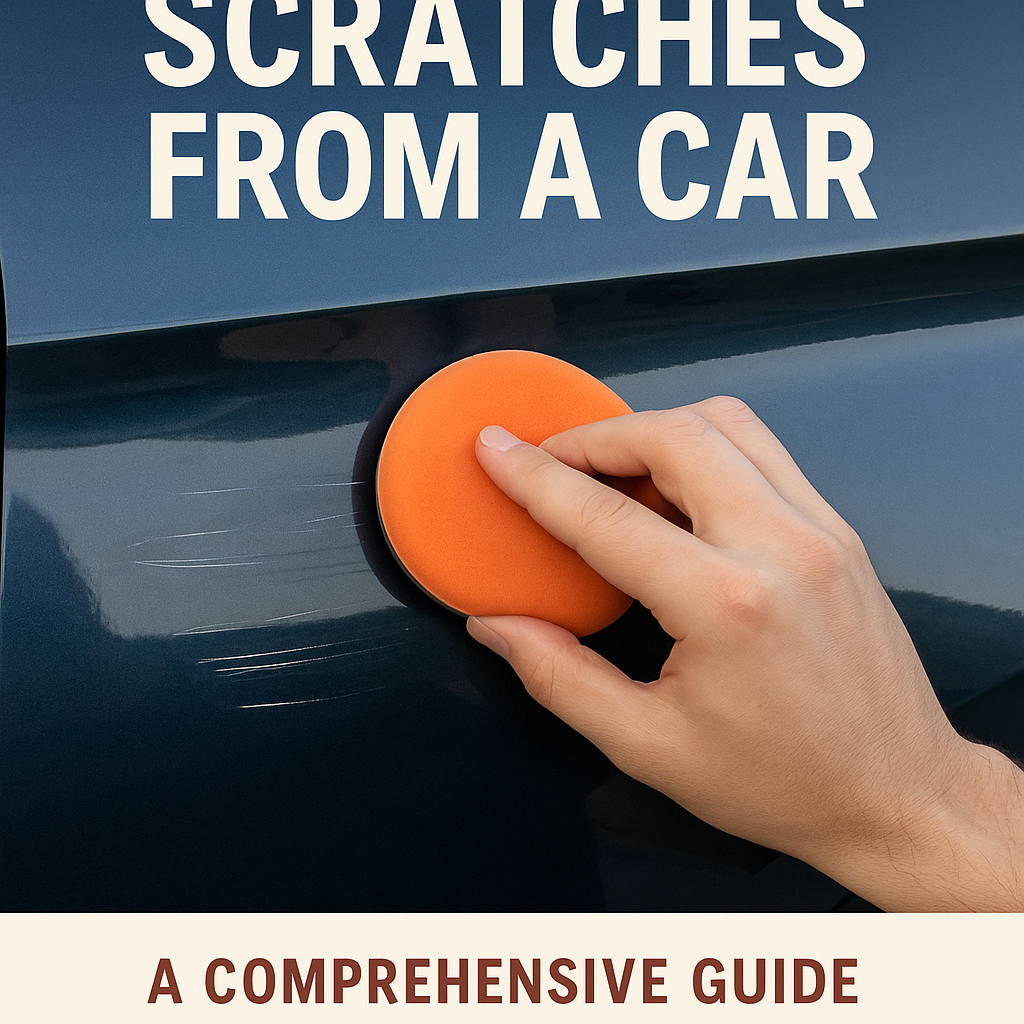Your car’s exterior endures constant exposure to the elements—sun, wind, rain, dust, and debris. Over time, scratches inevitably appear, whether from a careless parking lot bump, overzealous car wash, or accidental contact with keys or branches. While some scratches may seem superficial, others can compromise the protective paint layers and even lead to rust if ignored. The good news? Many car scratches can be repaired at home with the right approach and tools.
This in-depth guide covers everything you need to know about removing car scratches—whether they’re light surface blemishes or deeper gouges.
Understanding Car Paint Layers and Scratch Severity
A car’s paint job is more than just color. It consists of multiple protective layers:
- Clear Coat: A transparent, protective layer that guards against UV rays, oxidation, and minor abrasions.
- Base Coat: The colored layer, providing the car’s finish.
- Primer: Adheres paint to the metal and provides corrosion protection.
- Metal Body: The car’s structure.
The depth of the scratch determines the severity and required repair method:
✅ Surface Scratches (Clear Coat Only) – These are often light scuffs or swirl marks.
✅ Deeper Scratches (Base Coat or Primer) – Visible color changes or lighter areas.
✅ Severe Scratches (Metal Exposed) – Rust risk if untreated, requires urgent repair.
Step-by-Step Guide to Removing Scratches from a Car
Step 1: Assess the Scratch
✔️ Run your fingernail lightly across the scratch.
- If your nail doesn’t catch: It’s likely a minor clear coat scratch.
- If it catches: The scratch has penetrated deeper.
- If metal is visible: The scratch has gone through the paint and primer layers.
💡 Pro Tip: Inspect the scratch in good lighting and from multiple angles to determine depth. This helps avoid wasting time on ineffective repairs.
Step 2: Prepare Your Workspace and Materials
Here’s an expanded list of tools and materials for every level of scratch repair:
- Car soap and water
- Microfiber cloths (multiple)
- Automotive masking tape (to protect surrounding areas)
- Fine-grit sandpaper (2000-3000 grit)
- Rubbing compound (abrasive paste)
- Polishing compound (restores shine)
- Scratch removal kit (optional)
- Touch-up paint (color-matched)
- Clear coat applicator
- Primer (for deep scratches)
- Fine paintbrush or applicator pen
- Car wax or ceramic coating
- Dual-action polisher (for large areas)
Step 3: Clean and Prepare the Surface
A clean surface is essential for effective repair.
1️⃣ Wash the car with car soap and water to remove dirt and contaminants.
2️⃣ Dry thoroughly with a microfiber cloth to prevent water spots.
3️⃣ Mask off surrounding areas if using sandpaper or paint to prevent accidental damage.
Step 4: Removing Minor Scratches (Clear Coat Only)
Option 1: DIY Scratch Removal with Toothpaste
- Use a non-gel toothpaste as a mild abrasive.
- Apply to a damp microfiber cloth, gently rubbing in circular motions for 30-60 seconds.
- Wipe clean with a damp cloth and inspect. Repeat if needed.
💡 Pro Tip: Toothpaste works best for hairline scratches or light swirl marks.
Option 2: Rubbing Compound and Polishing
- Apply a small amount of rubbing compound to a foam applicator or microfiber cloth.
- Gently buff the scratch area in circular motions.
- Wipe clean and inspect.
- Follow with a polishing compound to restore gloss and remove fine abrasions.
- Seal with a layer of wax to protect the repaired area.
Using a Dual-Action Polisher (Optional)
For multiple scratches or large areas, a dual-action polisher ensures even coverage and professional-level results. Use a foam pad with rubbing compound, followed by polish and wax.
Step 5: Repairing Deeper Scratches (Base Coat or Primer Exposed)
1️⃣ Lightly sand the edges of the scratch with 2000-grit sandpaper to smooth out the damage.
2️⃣ Clean the area again to remove debris.
3️⃣ Apply color-matched touch-up paint using a fine brush or applicator pen. Work in thin, even layers and allow each to dry before adding another.
4️⃣ Apply a clear coat over the touch-up paint to seal and protect.
5️⃣ Wet sand the repaired area with 3000-grit sandpaper for blending (optional but recommended).
6️⃣ Polish the area with a polishing compound to restore gloss.
7️⃣ Apply wax or ceramic coating to seal and protect the repair.
💡 Pro Tip: Use a toothpick for ultra-precise application on very fine scratches.
Step 6: Repairing Severe Scratches (Metal Exposed)
For severe scratches:
🔧 Use automotive primer first to cover the exposed metal. Allow it to dry completely.
🎨 Apply touch-up paint in thin layers, building up color gradually.
💎 Seal with clear coat and polish the area.
⚠️ Rust Check: If rust has started to form, remove it with a rust remover or consult a professional.
Step 7: Finishing Touch – Wax and Protect
After any scratch repair, it’s vital to protect your work:
- Apply a high-quality car wax or ceramic coating to seal the area.
- Waxing enhances shine and creates a protective barrier against future scratches.
💡 Expert Tip: Regular waxing every 2-3 months keeps your paint job looking new and provides long-term scratch protection.
When Should You Seek Professional Help?
While DIY solutions work for light to moderate scratches, consider professional help if:
- The scratch exposes bare metal or spans a large area.
- There’s rust development.
- The damage involves multiple panels.
- You desire a flawless, factory-quality finish.
Auto body professionals use specialized tools, color-matching technology, and high-quality finishes to ensure perfect results.
Cost Breakdown: DIY vs Professional Repair
| Scratch Severity | DIY Cost | Professional Repair |
|---|---|---|
| Minor surface scratches | $10 – $50 | $50 – $150 |
| Moderate scratches (base coat) | $20 – $100 | $150 – $500 |
| Severe scratches (metal exposed) | $50 – $150 | $300 – $1,000+ |
💡 Tip: DIY methods can save hundreds of dollars, especially for minor scratches.
Extra Tips to Prevent Future Scratches
✅ Park away from high-traffic areas, shopping carts, and under trees.
✅ Wash with a two-bucket method to avoid trapping dirt in your wash mitt.
✅ Use soft microfiber towels for drying.
✅ Consider applying paint protection film or ceramic coatings for enhanced durability.
✅ Regular maintenance like waxing or sealing can help reduce scratch risk.
Conclusion
Scratches on your car are inevitable, but with the right approach, you can restore your car’s exterior and maintain its shine. From quick DIY fixes for light scratches to advanced touch-up techniques for deeper damage, this guide equips you with the knowledge to handle it all. Remember: preparation, precision, and patience are key.
Whether you choose to tackle the repair yourself or consult a professional, protecting your car’s paintwork ensures it stays beautiful and valuable for years to come.

